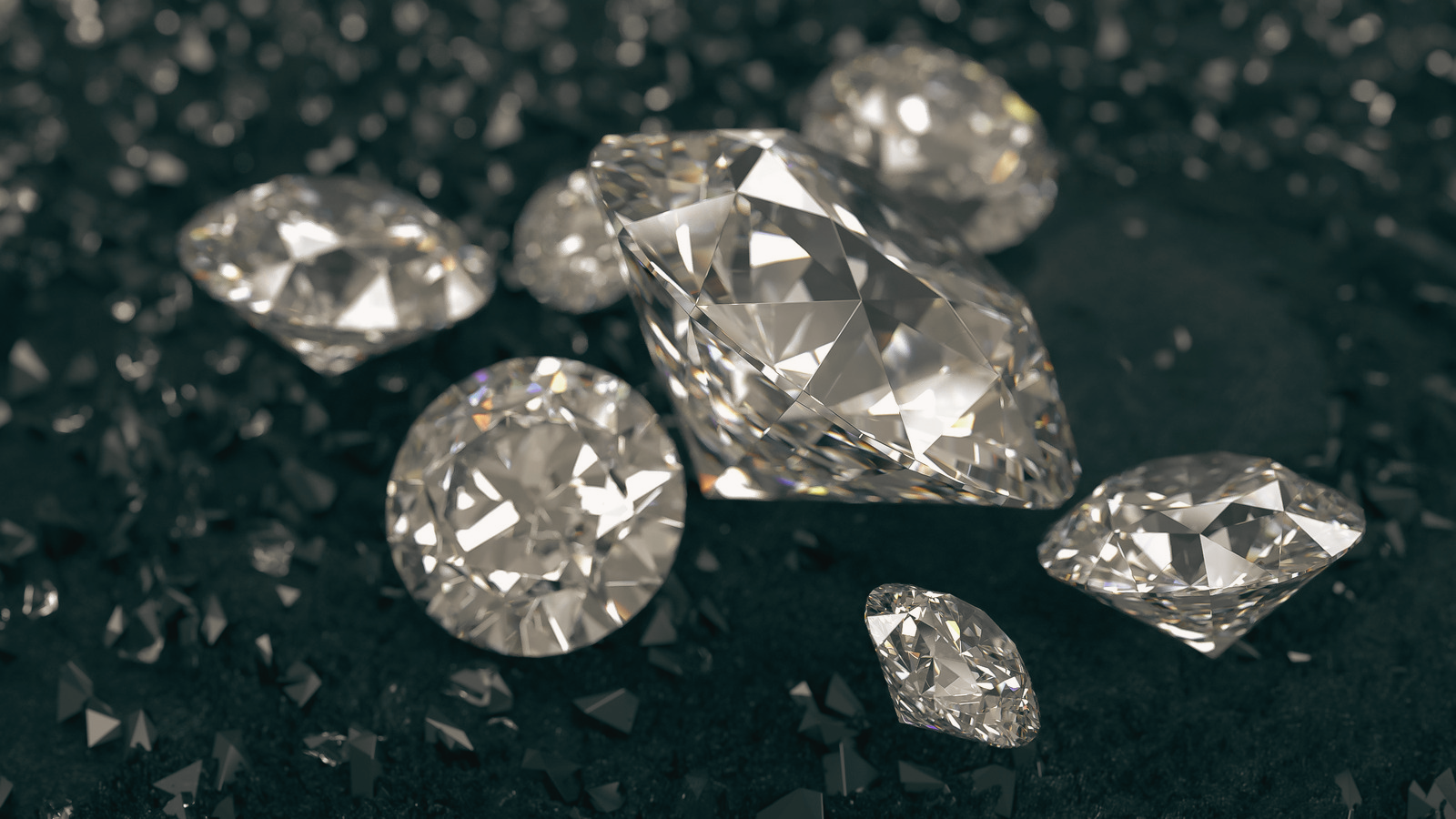The diamond crown and pavilion are the other two important parts of a diamond that completes the proportion section of a grading report along with the depth and table, polish and symmetry parameters. Both the crown and pavilion affect the diamond’s appearance and performance. The right angles enhance the diamond's performance – brilliance, fire and scintillation.
Diamond Crown
The portion of the diamond that extends from the girdle to the top of the table is called the crown. It is made up of the upper diamond facets, often known as the diamond's "windows," through which light passes to create the diamond's glitter. To ensure that the crown has the proper proportion for a stunning center stone, it is graded according to height percentage and angle.
The Facets
The crown makes up small facets from bezel facets (crown mains), star facets, upper girdle facets (upper halves), and the table facet. Each section contributes to how a diamond appears visually. 
The Star Facets
The Bezel Facets
The Upper Girdle Facets
The facets that connect the girdle to the bezel facets are called the “upper girdle facets”. These facets, together with the lower girdle facets located directly beneath the girdle plane, play a vital part in the conveyance of light beams in many directions. If these facets are not polished properly, the diamond's brightness will be reduced, resulting in a dull-looking stone.
The Height
The measurement in millimeters from the girdle plane to the table is known as the diamond's crown height. It accounts for around 16% of the height of the stone.
The height % of the crown is calculated by comparing the height to the average girdle diameter and is computed using the formula below:
The crown height of a diamond has a direct impact on its fire and brightness. When properly cut, the crown contributes to the ideal proportion of a diamond cut. The ideal crown height percentage of a properly cut diamond is between 14% to 16%.
The Angle
The crown facets behaving as prisms play a crucial role in light dispersion to ignite fire. When it bends the light that enters the table, the crown angle influences how much fire is created.
The ideal crown angle of a round brilliant diamond is between 33 to 35 degrees. It is the inverse tangent of 1 minus the table percentage divided by 100 multiplied by 50 and is expressed in the following formula:
Crown Angle = tan-1 of [1– (Table % / 100)] x 50
Steps:
-
Get the Table % using the following formula:
Table % = Table Size (mm) / Average Girdle Diameter
- 1 minus the answer from the first step above.
- Multiply the answer from step 2 by 50.
- Divide the crown depth percentage by the answer from step 3.
- Using a scientific calculator, type the answer from step 4 and press the Tan – 1 button to get the crown angle.
Diamond Pavilion
The pavilion is the “V” shape section in the lower half of the diamond when the table is face up. It is made up of the girdle, pavilion facets, and culet. It comprises 8 pavilion mains and 16 lower girdle facets also known as “lower halves”. If a facet exists, the culet facet counts.
A diamond's capacity to break light and reflect it from numerous angles is a positive trait. As light enters the table, it is split by the crown facets and reflected at various angles down to the lower girdle facets in the pavilion's top portion. It bounces to the pavilion's main facets and reflects the table as brilliance.
The pavilion, like the crown, has an impact on how the diamond appears in the viewer's eye. Its large facets efficiently refract light, reflect it back to the table, creating the brilliance and sparkle seen from the top. The amount of light returned by the stone is also affected by the pavilion's depth. If the pavilion is either too shallow or too deep, light escapes and the diamond appears dull and less dazzling.
Pavilion Depth
The amount of light returned by the stone is affected by the pavilion's depth. If the pavilion is either too shallow or too deep, light escapes and the diamond appears dull and less dazzling. Poorly cut pavilion facets cause light leakage, reducing the sparkle.
The pavilion depth percentage is the diamond’s pavilion depth compared to the average girdle diameter. The ideal pavilion depth based on GIA standards is between 41% to 48%. It is calculated using the below formula:
Pavilion Depth % = (Pavilion Depth / Average Girdle Diameter) x 100
where the Average Girdle Diameter = (minimum diameter + maximum diameter) ÷ 2.
The depth percentage of fancy-cut diamonds can also be calculated as follows:
Fancy Cut Depth Percentage = (Pavilion Depth / Total Diamont Width) x 100
Pavilion Angle
Diamonds sparkle because of how the light reflects from one facet to another until the prism of light is complete. A perfectly-cut diamond with an ideal pavilion angle produces high sparkle, brilliance and fire.
Pavilion Angle = tan-1 of [Pavilion Depth / 50]
Steps:
- Using a scientific calculator, enter the pavilion depth (in mm).
- Divide the pavilion depth by 50.
- Press Tan-1 in the calculator and the answer that appears is the pavilion angle.
Knowing if the crown and pavilion fall within the ideal range is important when looking for the perfect diamond to purchase. It is fortunate that diamond proportions can be measured and used as a guide to eventually obtain something elegant and worth your investment for yourself and someone you care for dearly.
When looking for a round brilliant diamond, below is a quick cheat sheet for the ideal proportions:
When in doubt, it is strongly recommended to consult a trusted jeweller to assist you with understanding diamond proportions and performance. At Kobelli, our diamond experts can help you from start to finish. You are welcome to contact us for a FREE consultation.






